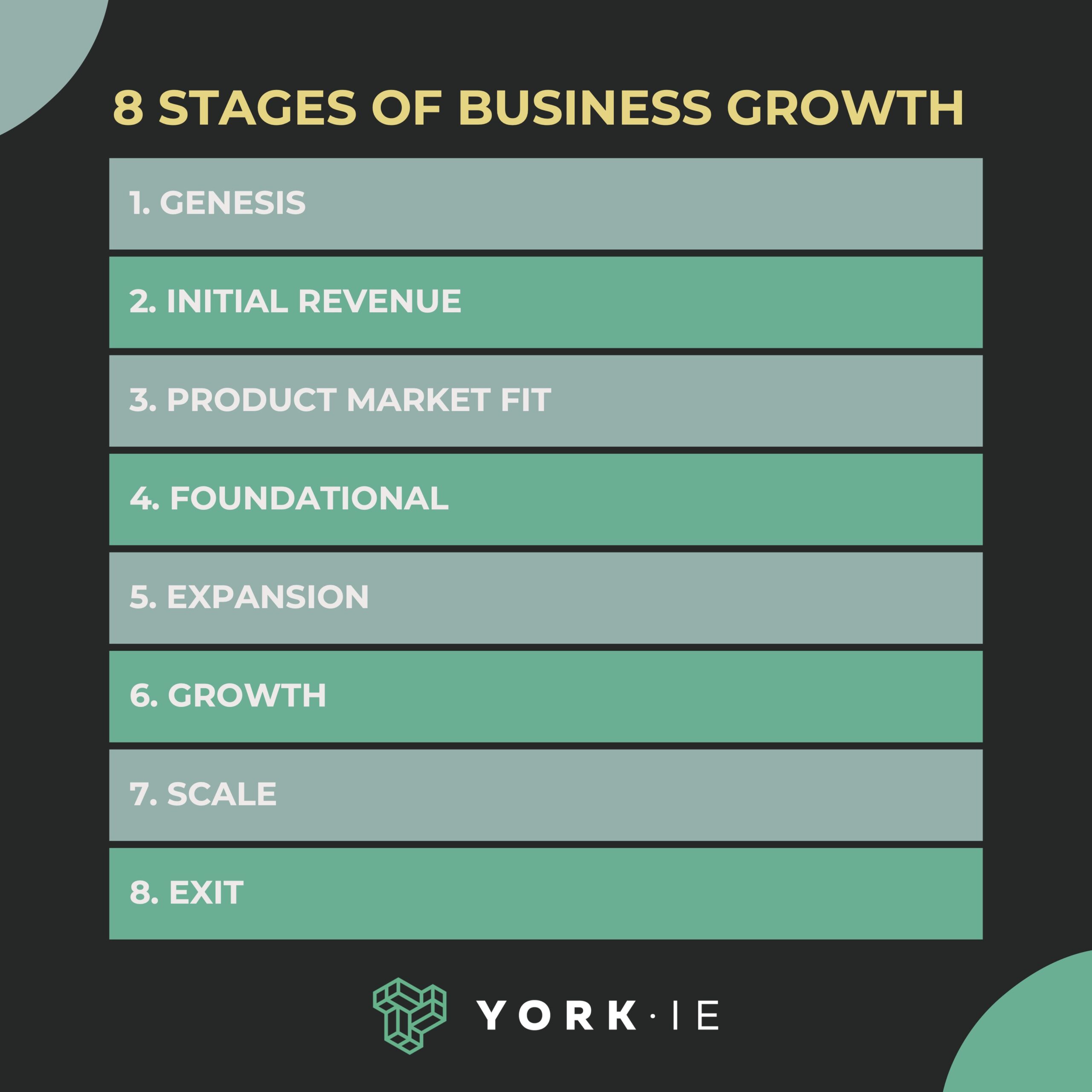Business growth is the process of setting long-term goals for sustainably increasing your revenue and working backwards from there to achieve them in a purposeful and strategic way. Customer count, headcount, customer happiness and product maturation can all be additional signs of company growth.
It’s also relative to you as a founder. Are you trying to build the next Uber, or are you trying to build a nice boutique marketing agency? You have to define that for yourself. You don’t have to build a 2,000-person company if you don’t want to.
Why Is Business Growth Important?
Business growth is important because it’s all about the bottoms-up execution plans that you put together to achieve your desired results — not about the top-down financial models you present to your board.
You’ve probably heard the saying, “Technology companies either grow or die.” I think about it a lot. And while I agree with it in general, I don’t agree with the growth-at-all-costs mentality that has emanated from Silicon Valley over the past several years.
In the current culture of private startups, everybody defaults to thinking they should raise money. You can get major media coverage if you announce a large funding round, but not if you announce how many units you’ve sold or how much revenue you’ve generated. A lot of times, those things don’t even get talked about.
When was the last time you saw a headline that read, “York IE Wins a New Customer?” Never, right? But if we went out and raised $5 million, we could get publications to write about us.
What Are the Real Drivers of Business Growth?
Revenue, profitability and related metrics are the real drivers of business growth, and not enough attention is being paid to them.
How many customers do you need to win, retain and expand? What average deal size do you need? How are you going to close those deals? The strategies that you develop to answer those questions, and how successful you are at executing on those strategies, are what truly matter.
That’s why there needs to be a pragmatic recalibration of what growth in business really means.
There’s too much emphasis on funds raised, valuations and other vanity metrics. These often have no correlation to the long-term success of your company. And in fact, sometimes they can be a detriment.
Why? Because the traditional venture capital model is built on the premise of maximizing returns for investors — not supporting the long-term success of the companies they invest in. This leads to a focus on short-term gains and a pressure to exit investments quickly, rather than nurturing and supporting true growth in business.
As a result, most venture-backed companies never generate the high returns that VCs promise to their investors — or even return the initial investment. This puts significant pressure on the companies that do succeed to generate outsized returns, so they can make up for the losses incurred by all the rest.
I’m not against raising money from VC firms. After all, York IE is a VC firm. And I’m not against raising a lot of money. If you have the opportunity to raise a large round at a high valuation that you deserve, by all means, go get it!
But it shouldn’t be the default. Make sure you’re doing it because you’ve earned it and have specific plans to unlock your next phase of company growth — not because you feel like you have to keep up with the rat race.
Remember that raising money and making money are not the same thing!
Business Growth Stages
People often talk about the stages of growth in terms of fundraising: Pre-Seed, Seed, Series A, etc. But I look at business growth a little differently, because not all founders want or need to seek outside funding:
- Genesis
- Initial Revenue
- Product Market Fit
- Foundational
- Expansion
- Growth
- Scale
- Exit
Preserve your optionality and retain the ability to have a strategic exit if it makes sense for your specific stage. And always keep an eye on the growth levers available for you to pull — and the looming pitfalls for you to avoid — at each of these inflection points.
How to Develop a Growth Strategy
To develop a growth strategy, marry your financial model to your product, go-to-market (GTM) and brand strategies, and align them all to the team you’re building.
Finance: Include key performance indicator (KPI) reviews, capital strategy (may include fundraise planning) and other finer points of running a business to create a solid foundation for your future.
Product: Do research to identify market needs. Then build a product and iterate on your product roadmap to drive your business forward.
GTM: Create detailed plans for how you’ll build out an effective single GTM funnel strategy, from demand generation to customer success, and a sales organization to generate predictable, scalable revenue.
Brand: Develop a unique point of view and consistently deliver it to your target audience.
The best business growth strategies balance your long-term vision with a near-term focus on execution.
Writing a Business Growth Plan
To write a plan for your business growth, start with your long-term, high-level goals and then break them down into increasingly specific tasks that will help you achieve them:
- Vision: your company’s big-picture mission
- Strategic objectives: the broad goals that will enable you to fulfill your vision
- Annual objectives: the milestones you must reach to achieve those goals
- Action items: the tasks you’ll complete to reach those milestones
- Measurement: the benchmarks that determine if you’re on the right track
This approach ensures your entire company is operating with purpose and efficiency, and that’s what business growth is all about.
Over the last several years in the tech sector, the concept of constraints has been lost on a lot of people. But operating with constraints is the healthiest way to build a profitable, sustainable business. You’ll truly understand the engine that drives your company growth, and you’ll approach it with more direction and purpose.








